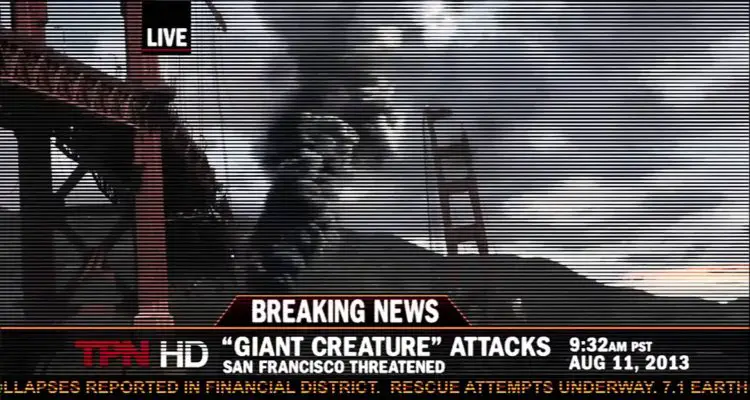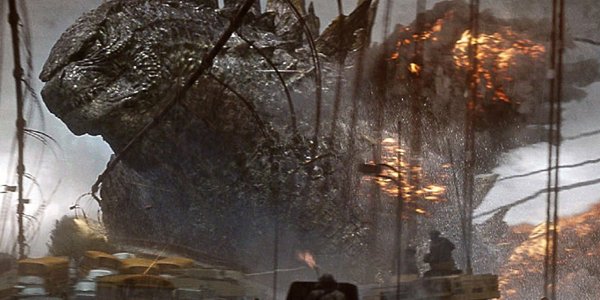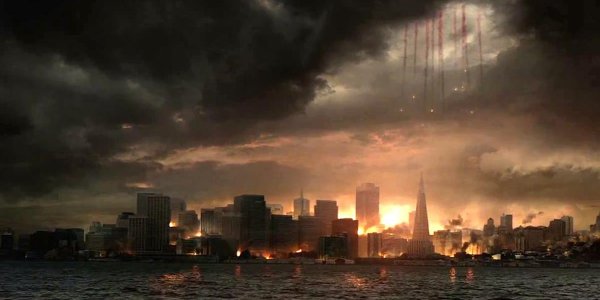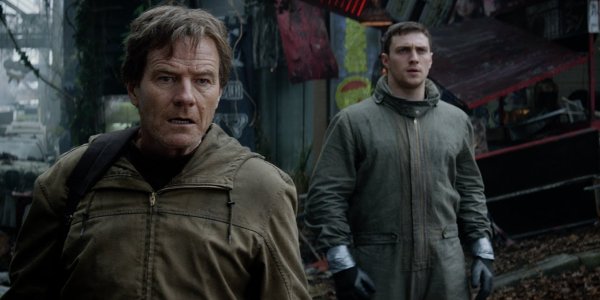GODZILLA Is Far From Perfect, But It’s Perfectly Entertaining

Manon de Reeper is the founder and CEO of Film…
The long anticipated 2014 edition of Godzilla has not been hailed too positively by the critics. I recognize its flaws, but ultimately, I found the movie to be an enjoyable and entertaining ride.
Godzilla – or Gojira – is originally a Japanese concept within the Kaiju (“monster” or “strange creature”) genre. The first Japanese Godzilla movie was released all the way back in 1954, and the creature has been popular ever since. Hollywood recognized its success and adapted the first Godzilla movie in 1956, titled Godzilla, King of the Monsters!. Since then, many more Godzilla movies have been added to the franchise, both in Japan and in the U.S., and they inspired many other giant monster creature movies and franchises, among them Gamerain Japan, Gorgo in the U.K., and among others, Cloverfield and Pacific Rim in the U.S..
In 2004, after the release of Godzilla: Final Wars, Toho, the Japanese company producing the Godzilla franchise, decided it would not release any Godzilla movies for at least ten years. Today, we’re discussing the latest Hollywood addition to the franchise, the 2014 Godzilla, directed by Gareth Edwards.
A Worthy Addition To The Franchise
In the 2014 rendition of Godzilla, the creature himself is awe-inspiring. The anticipation for the creature to be unveiled is great; it takes a fair amount of time before we finally get to see the king of monsters. And when he is finally revealed, it’s nothing short of gratifying: he’s thoroughly impressive, the concept of such a powerful creature on its own already induces chills. However, the execution of the creature is equally impressive: the graphics are astounding, and according to the studio, more than 700 people worked on creating Godzilla.

Interestingly, Gojira, as Dr. Ishiro Serizawa (Ken Watanabe), head of the Monarch company, lovingly refers to him, is the protagonist monster in this story. When two creatures of different species of Kaiju are awakened and start to destroy the U.S., Serizawa states their only hope is Godzilla, and that he will restore balance by destroying the two MUTO (Massive Unidentified Terrestrial Organism). Meanwhile the American army plans to bomb the MUTO, which is horribly and stupidly futile.
Constant Onslaught of Action Despite The Thin Plot
I can’t deny the movie’s incredible… incredibleness. It’s a lot to take in. The movie administers a constant onslaught of action, the music, composed by Alexandre Desplat (Argo, Harry Potter and the Deathly Hallows: Part 1 &2), is intense, the visuals are grandiose, the violence is unrelenting. The pace is high and the movie is over before you know it, leaving you in your seat with your hair blown back and nails chewed down.

Nevertheless, what can’t be denied either is that the plot is thin and has some gaping holes. For instance, almost the entire first act of the movie is set in Japan, but aside from Dr. Serizawa, there is not a Japanese person to be seen. The Janjira nuclear plant is the main setting of the first act – first, the entire plant collapses (which is bluntly reminiscent of the 2011 Fukushima nuclear disaster). Then, fifteen years later, the Monarch company is monitoring the plant still, because a MUTO is feeding on the leftover nuclear material of the plant. When the situation at the Janjira plant goes fubar, not the Japanese army shows up, but the American one, which struck me as odd. Furthermore, the Monarch company doesn’t actually know the MUTO is feeding on the broken down nuclear reactors and is building up to an EMP, which seemed particularly stupid. They only find out when conspiracy theorist and former employee of the plant Joe Brody (Bryan Cranston), tells them, just before it’s too late. You’d think a powerful, wealthy company would have the means to figure this out on their own.
Most characters in Godzilla, however, aren’t very smart. Ford Brody (played by Aaron Taylor-Johnson) isn’t a particularly smart dude for multiple unnecessary risk-taking reasons, but his wife Elle (Elizabeth Olsen) was even worse: she ditched their kid with some random colleague when the MUTO hit San Fransisco so she can run through the city (like a headless chicken) on her own. Odd choice for a mother.

But by far the stupidest was the military. Just consider the following sequence of events. Early on, it becomes clear the MUTO feed on nuclear material. When they wake and are released onto the world and start destroying cities, what’s the army’s brilliant plan? Bomb them! With nukes! Their next very logical idea is to transport these enormous nukes on trains. Someone really needed to be fired in their strategy department. That the MUTO would find and devour these bombs was awfully predictable.
The Kaiju and Nuclear Material
As almost any Kaiju movie, Godzilla adheres perfectly to the moral that damns the use of atomic weapons. Since the concept’s inception, Godzilla has represented the Japanese fears of the nuclear attacks on Hiroshima and Nagasaki, and the possible repetition of such an event. The Godzilla films have always criticized nuclear bombs, and the ’14 Godzilla does no differently. The movie was harshly moralistic at times, driving its point home over and over: nukes BAD, people STUPID!
Final Verdict
All in all, I may be skeptical about the plot in particular, but despite its glaring shortcomings, I still really enjoyed the 2014 rendition of Godzilla. The effects were great (it’s also pretty awesome in 3D – not as invasive as it can sometimes be), it was suspenseful and the conclusion of the battle was just all sorts of “clapping in glee” fun. It’s a childishly simple movie, far from smart, and I will probably never watch it again but the entertainment value was high. I generally prefer the more serious, intellectual movies, but sometimes it’s just fun to sit back and not have to think, and just enjoy the ride.
If you’re looking for an intelligent movie, skip Godzilla. If you’re looking for an entertaining, easy flick, this is a safe bet, even if the movie pretends to be more than that with its moralistic anti-nuke elements. It has to be said that “nature” being a bad-ass in the shape of giant monsters fighting, crushing cities and people who are totally helpless is just… delicious misanthropic fun.
Have you seen Godzilla yet? Are you going to?
Do you want to see more of these giant creature, Kaiju, films?
Come chat with us in the comments and don’t forget to share this article on your social media if you enjoyed reading it!
Does content like this matter to you?
Become a Member and support film journalism. Unlock access to all of Film Inquiry`s great articles. Join a community of like-minded readers who are passionate about cinema - get access to our private members Network, give back to independent filmmakers, and more.
Manon de Reeper is the founder and CEO of Film Inquiry, and a screenwriter/producer. Her directorial debut, a horror short film, is forthcoming in 2021.













